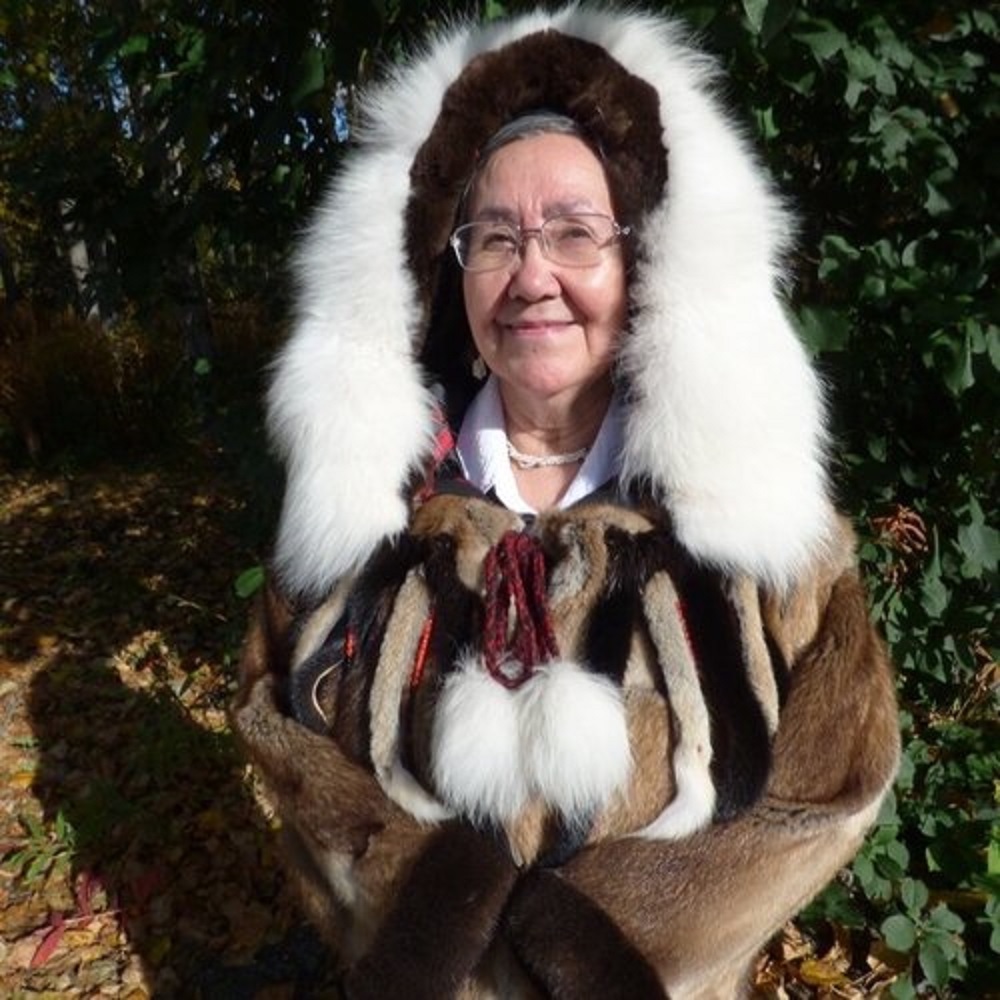Located in Anchorage, ANHC perpetuates and teaches Alaska Native cultures and life-ways through programs led by Alaska Natives. It is the only statewide education center dedicated to celebrating all Indigenous cultures in Alaska: Iñupiaq, St. Lawrence Island Yupik, Yup’ik, Cup’ik, Sugpiaq (Alutiiq), Unangax̂, Athabascan, Eyak, Tlingit, Haida and Tsimshian. Through permanent collections, life-sized village sites, Indigenous-led tours and immersive programs, ANHC provides engaging experiences that facilitate greater understanding of the rich and diverse Alaska Native cultures.

Tatiana Ticknor—who is Tlingit, Dena’ina Athabascan and Deg Hit’an Athabascan—began her career at ANHC as a summer intern at the age of 15 and is currently the Unguwat Program Coordinator. She is also a mother and is in her junior year at University of Alaska Fairbanks working toward a BA in Applied Business. Among the Unguwat program offerings, “our weekly Native dance group is the most successful,” Ticknor said, and is taught twice a week. “Before then there was no dance class available, and it really helps our community.”
Ticknor shared that the program helps students connect with their culture and family in a different way. It offers a place where students learn from each other and share their thoughts, and it focuses on bringing them together with Elders. Marge Nakak is an Elder who teaches dance, regalia-making and life skills to program students. Nakak specializes in sewing garments, and she began sharing and sustaining cultural traditions in 1965. Her practice includes studying historic photos to recreate designs from the past for wearing today. She regularly teaches at workshops and classes as part of her commitment to carry these traditions forward to next generations, often helping students who not do not have someone in their family that can teach them sewing and how to make a parka.

Alaska Native youth are a critically underserved, high-need group who face gaps in culturally and socially appropriate educational programs. The Unguwat: Resilience & Connection program brings people together to teach and learn Alaska Native knowledge and values, and thereby contributes to the prevention of suicide and substance misuse faced by youth. “Building a sense of community for those involved has been awesome,” Ticknor said. “Personally, it has been a dream of mine to take part in building community. Creating a space for people to come and learn about their culture has really been rewarding. It’s awesome to see participants being connected to their culture. Some have said they always wanted to take part in these activities at the Unguwat program. Also, others have said that the program has literally changed their life for the better.”
Author biography
Richard Perry from Anchorage, Alaska, is Yup’ik and Gwich’in. He is a writer, journalist and photographer with a BA in Philosophy, Applied Ethics. He has regularly published articles and photos in Indian Country Today, First Alaskans magazine, and Alaska Business Monthly. In 2016, Perry completed a month-long artist residency at the Tyrone Guthrie Centre in Ireland. More recently, he has written a graphic novel called the Wildmen of Denali, which is currently in the process of being illustrated.
Acknowledgements
This article was funded in part by a grant from the United States Department of State. The opinions, findings and conclusions stated herein are those of the author[s] and do not necessarily reflect those of the United States Department of State.
This story is part of the Alaska Spotlight. View more content from the Spotlight here.

